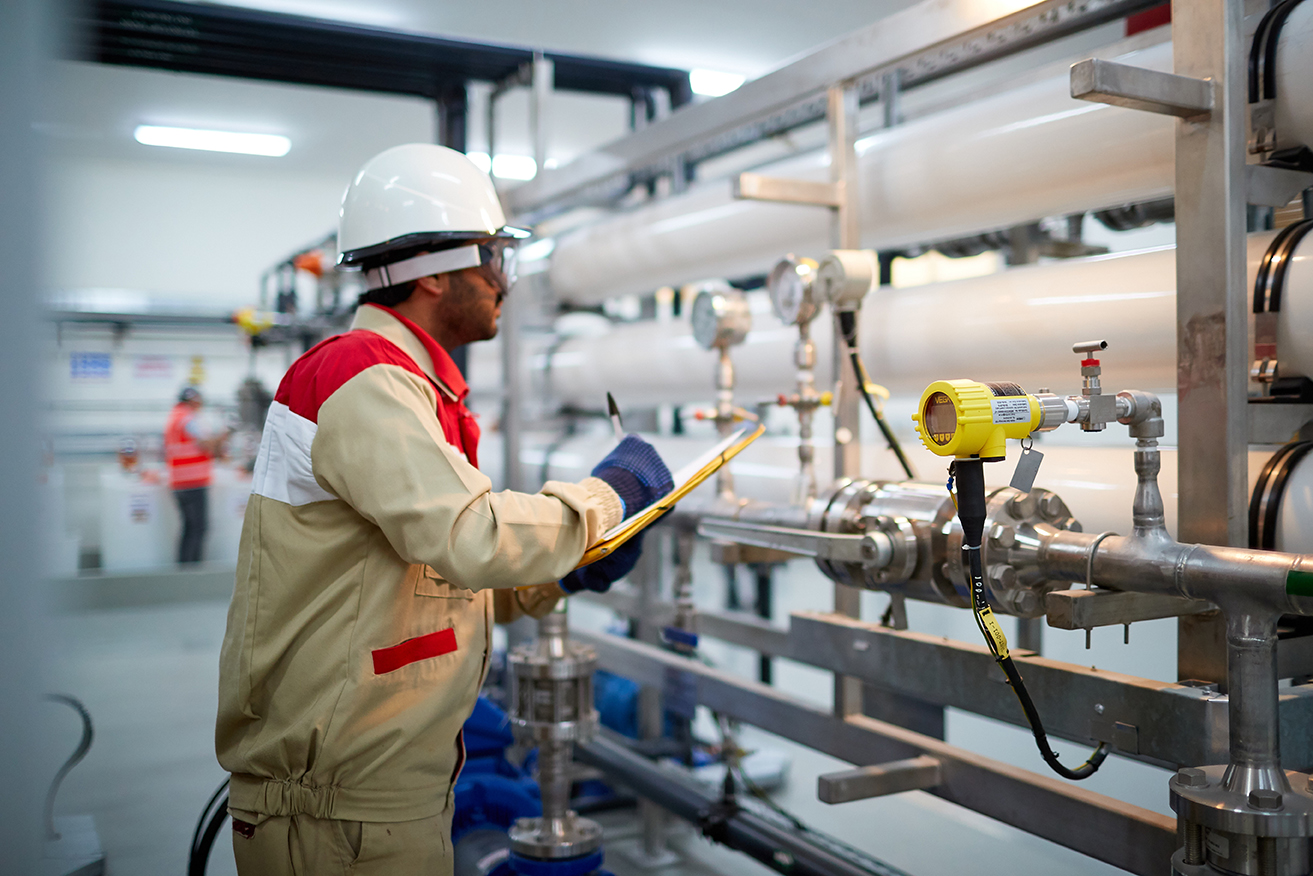 The lifespan of water treatment membranes can vary widely based on application and environmental factors. While Ultrafiltration (UF) membranes typically last between 3–5 years and Reverse Osmosis (RO) membranes between 3–7 years, these are merely general benchmarks.
The lifespan of water treatment membranes can vary widely based on application and environmental factors. While Ultrafiltration (UF) membranes typically last between 3–5 years and Reverse Osmosis (RO) membranes between 3–7 years, these are merely general benchmarks.
Actual membrane longevity depends on operating conditions, feedwater quality, cleaning schedules, and system dynamics. Some facilities may need to replace membranes sooner due to challenging feedwater conditions or high-demand operations, while others may extend membrane life beyond these averages with careful maintenance and optimal conditions.
This article explores key indicators that suggest when membrane replacement is necessary, from performance metrics to physical signs. It also provides strategies for maximizing membrane lifespan through proper maintenance, best practices, and preventive care. Understanding these factors will help operators make informed decisions about replacement timing, optimizing system performance and reducing operational costs.
The Importance of Timely Membrane Replacement
For facilities operating UF and RO systems, the timing of membrane replacement is crucial to maintaining both operational efficiency and cost-effectiveness. Tracking and trending performance data such as flow rate, conductivity, pressure drop, and cleaning frequency can help operators predict membrane decline and schedule replacements proactively, preventing unplanned downtime.
Key Indicators That It’s Time to Replace Your Membranes
1. Declining Effluent Quality
For RO membranes: A noticeable increase in Total Dissolved Solids (TDS) or a steady rise in permeate conductivity often indicates membrane degradation, fouling, or physical damage.For UF membranes: If the system begins producing cloudy or turbid permeate, or if particle counts increase, the membrane pores may be compromised or damaged.
2. Reduced Permeate Flow Rate
A consistent drop in water production at stable pressure and temperature is a sign of fouling, compacted membranes, or other damage. This suggests the membrane is losing permeability and may be nearing the end of its service life.3. Ineffective Cleaning (CIP)
If Clean-in-Place (CIP) procedures no longer restore membrane performance to acceptable levels, it could indicate irreversible fouling, structural damage, or chemical degradation. If cleaning cycles yield diminishing returns, it may be time for a replacement.4. Increased Operating Costs
If energy or chemical costs rise significantly due to higher pressures or more frequent cleanings, replacing membranes can often be more cost-effective than continuing maintenance.5. Physical Inspection of Membranes
RO Membranes: Delamination, telescoping, discoloration, or visible damage found during inspection are clear signs of mechanical failure. Irreversible fouling that persists despite thorough cleaning cycles often means the membrane has reached the end of its useful life.UF Membranes: Fiber breakage, leaks, or cracks signal the need for replacement.
Maximizing Membrane Lifespan with Preventive Maintenance
 To ensure the longest possible lifespan for RO and UF membranes, proper pretreatment, regular maintenance, and optimized operation are critical. Here are essential steps to maximize membrane longevity:
To ensure the longest possible lifespan for RO and UF membranes, proper pretreatment, regular maintenance, and optimized operation are critical. Here are essential steps to maximize membrane longevity:
1) Proper Pretreatment
For RO Systems:
-
-
- Use UF or multimedia filtration to remove suspended solids.
- Control Silt Density Index (SDI) to < 3.0 (preferably < 1.0).
- Employ softening or antiscalants to prevent scaling.
- Dechlorinate feedwater if membranes are not chlorine-tolerant.
- Adjust pH for optimal performance and scale control.
- Use high-quality prefilter cartridges and replace them regularly.
-
For UF Systems:
-
-
-
- Use coagulants, if necessary, to improve solids removal.
- Protect membranes from oxidants like chlorine and ozone if they are not tolerant.
- Control turbidity and total suspended solids (TSS) in the feedwater
-
-
2) Monitor Key Operating Parameters Regularly
-
-
-
- Pressure differentials (Transmembrane Pressure for UF, ΔP for RO)
- Flow rates (feed, permeate, concentrate/retentate)
- Permeate quality (conductivity, turbidity, total organic carbon)
- Recovery and rejection rates
- Normalize data to account for temperature and flow variations, and adjust operations accordingly.
-
-
3) Routine Cleaning (CIP) — Clean When Indicated, Not Too Frequently
-
-
-
- Perform CIP only when performance indicators suggest a need, rather than on a rigid schedule.
- Ensure cleaning procedures and chemicals are selected by a competent water treatment expert.
- Alternate between alkaline and acidic cleans to address both organics and scale.
- Control cleaning time and temperature to ensure effective results.
-
-
4) Operate Within Manufacturer’s Specifications
-
-
-
- Respect recommended limits for pH, pressure, temperature, and flux.
- Avoid exceeding maximum recovery rates to prevent scaling.
- Ensure crossflow velocity and backpressure remain within safe limits.
-
-
5) Control Biofouling
-
-
-
- Install biocide dosing or chlorination systems (and ensure dechlorination before RO membranes).
- Regularly clean and disinfect feed tanks and piping to control microbial growth.
-
-
6) Follow Proper Shutdown and Storage Procedures
-
-
-
- Short-term shutdowns: Flush the system with permeate or clean water.
- Long-term storage (>7 days): Use preservation chemicals like sodium metabisulfite (SMBS) for RO and
appropriate biocides for UF membranes. - Avoid drying out membranes, which can cause irreversible damage.
-
-
7) Keep Detailed Logs and Use Automation
-
-
-
- Maintain comprehensive logs of flow rates, pressures, conductivity, and cleaning cycles.
- Collaborate with a service partner to train operators to identify early signs of fouling or damage.
- Use online sensors and SCADA systems for continuous monitoring.
- Leverage automation tools to optimize system operations and maintenance. Set alarms for deviations in pressure, flow, or water quality to catch issues early.
-
-
When to Perform a CIP (Clean-in-Place)
Regular CIP of RO and UF membranes is not just about cleaning—it's about protecting your investment, maximizing performance, ensuring compliance, and controlling costs. Here are guidelines on when to clean (CIP) membranes:
RO Membranes
- When normalized permeate flow decreases by 10–15%
- When normalized differential pressure increases by 10–15%
- When salt rejection drops by 5–10%
UF Membranes
- When transmembrane pressure (TMP) increases by 10–15%
- When permeate flow decreases significantly
- When backwash or chemically enhanced backwash (CEB) is no longer effective
 Trust Veolia for Your Membrane Replacement Needs
Trust Veolia for Your Membrane Replacement Needs
As a global leader in water treatment solutions, Veolia offers high-quality replacement membranes compatible with most major UF and RO system manufacturers. Our extensive inventory includes drop-in replacement elements that match or exceed OEM specifications, ensuring seamless integration with your existing system. Regardless of the type of system you operate, our experts can help you select the right replacement membranes to optimize your system's performance.
Don't wait until performance issues impact your operations. Contact Veolia today to discover how our replacement solutions can enhance your system's efficiency while potentially reducing operational costs. Our team of water treatment specialists is ready to support you with technical expertise, competitive pricing, and rapid delivery.
Call us at +1-937-890-4075 or email dayton.aftermarket@veolia.com to learn more about our membrane replacement options and technical support services. Let Veolia be your trusted partner in maintaining peak system performance.



